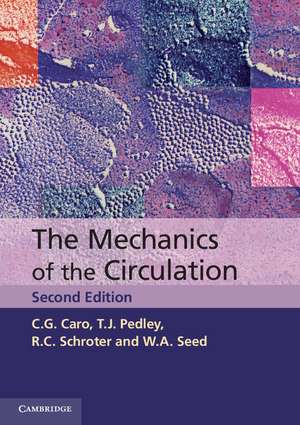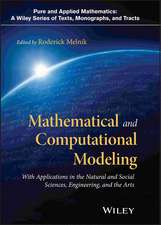The Mechanics of the Circulation
Autor C. G. Caro, T. J. Pedley, R. C. Schroter, W. A. Seed K. H. Parkeren Limba Engleză Paperback – 21 dec 2011
Preț: 367.40 lei
Nou
Puncte Express: 551
Preț estimativ în valută:
70.30€ • 73.40$ • 58.18£
70.30€ • 73.40$ • 58.18£
Carte tipărită la comandă
Livrare economică 05-19 aprilie
Preluare comenzi: 021 569.72.76
Specificații
ISBN-13: 9780521151771
ISBN-10: 0521151775
Pagini: 550
Ilustrații: 285 b/w illus. 15 tables
Dimensiuni: 175 x 245 x 28 mm
Greutate: 1 kg
Ediția:Revizuită
Editura: Cambridge University Press
Colecția Cambridge University Press
Locul publicării:Cambridge, United Kingdom
ISBN-10: 0521151775
Pagini: 550
Ilustrații: 285 b/w illus. 15 tables
Dimensiuni: 175 x 245 x 28 mm
Greutate: 1 kg
Ediția:Revizuită
Editura: Cambridge University Press
Colecția Cambridge University Press
Locul publicării:Cambridge, United Kingdom
Cuprins
Preface to the second edition; Preface to the first edition; Part I. Background Mechanics: 1. Particles and continuous materials; 2. Particle mechanics; 3. Units; 4. Basic ideas in fluid mechanics; 5. Flow in pipes and around objects; 6. Dimensional analysis; 7. Solid mechanics and the properties of blood vessel walls; 8. Oscillations and waves; 9. An introduction to mass transfer; Part II. Mechanics of the Circulation: 10. Blood; 11. The heart; 12. The systemic arteries; 13. The systemic microcirculation; 14. The systemic veins; 15. The pulmonary circulation; Index.
Recenzii
'This splendid book is so well written that one would seriously question the vocation of an investigator who couldn't understand it. It is essential reading for anyone who is interested in the mechanics of the circulation. The normally incomprehensible mechanical laws are explained so clearly that even the non-mathematically minded will have no difficulty, which makes me very sorry that it was not available when I was grappling with these problems.' David Mendel, Journal of the Royal Society of Medicine
'Like a good sculpture which leaves no chisel marks on the marble, there are no marks of individual specialization in this book. All is well integrated toward the physiology of circulation. Mathematics is avoided whenever practicable, and mechanics is presented in readily comprehensible terms … After reading the book, one would wonder how circulation physiology can be understood without such a study of mechanics. It cannot! I recommend this book to all physiology teachers and students.' Y. C. Fung, Journal of Biomechanical Engineering
'Here is a book on the mechanics of the circulation that is equally accessible to those trained in the life sciences and in the mechanical sciences. Furthermore, it succeeds remarkably in laying down a common foundation of mechanical, anatomical and physiological facts and principles strong enough to support the building-up of major collaborative research structures that can lead to significant new advances in the field.' James Lighthill, Journal of Fluid Mechanics
'Like a good sculpture which leaves no chisel marks on the marble, there are no marks of individual specialization in this book. All is well integrated toward the physiology of circulation. Mathematics is avoided whenever practicable, and mechanics is presented in readily comprehensible terms … After reading the book, one would wonder how circulation physiology can be understood without such a study of mechanics. It cannot! I recommend this book to all physiology teachers and students.' Y. C. Fung, Journal of Biomechanical Engineering
'Here is a book on the mechanics of the circulation that is equally accessible to those trained in the life sciences and in the mechanical sciences. Furthermore, it succeeds remarkably in laying down a common foundation of mechanical, anatomical and physiological facts and principles strong enough to support the building-up of major collaborative research structures that can lead to significant new advances in the field.' James Lighthill, Journal of Fluid Mechanics
Notă biografică
Descriere
This classic book outlines the anatomy and physiology of the circulation and explains the mechanical principles that govern it.











